Multi-Scale Interface in Unsaturated Soil
Flow processes in soils and porous media in general are affected by interfaces in various respects:
a. FLUID INVASION While at the macro scale fluid invasion is a smooth and continuous process characterized by the velocity of the propagating interface (front) between two fluids, it is characterized by rapid jumps exceeding the mean front velocity by more than an order of magnitude and rapid reconfigurations of menisci at the pore scale. High-speed imaging and acoustic emission technique is used for observation of the highly dynamic displacement processes at pore scale and associated rapid energy release. (Fig. 1 and Fig. 2).
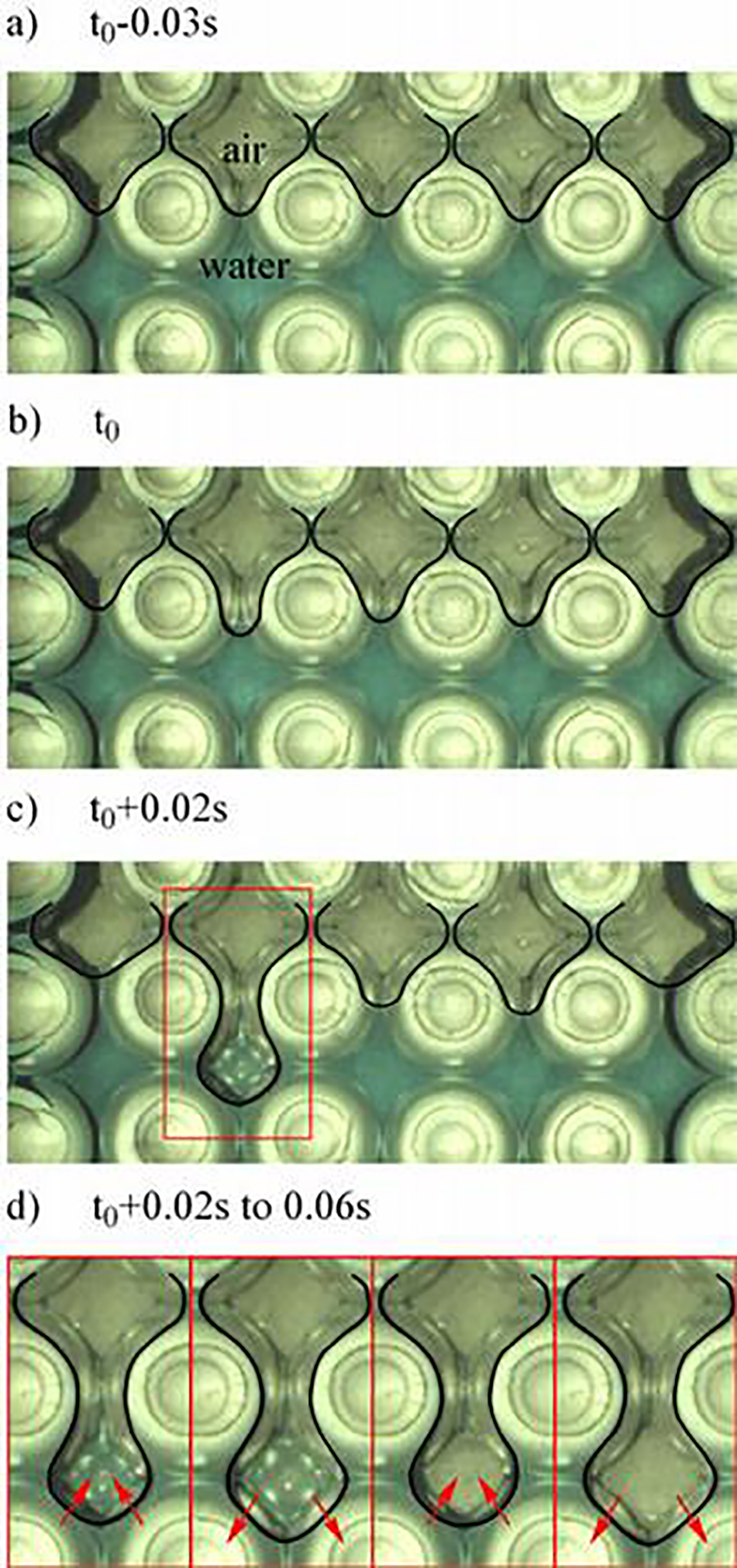
Figure 1: Fluid front displacement in regular glass bead packing (particle diameter 4 mm) deduced from high speed imaging. Drainage at mean front displacement rate of 4.1 mm/s. The water–air interface is highlighted by a black line. (a) Prior to an interfacial jump, the interface is pinned at pore throats. (b) Continuous liquid withdrawal pulls menisci toward constrictions until air-entry pressure of pore throat is exceeded. (c) The meniscus facing reduced absolute value of capillary pressure ‘‘jumps’’ into the pore body crossing the distance d = 2 mm within a time interval of Dt = 0.02 s with maximum velocity of 124.7 mm/s. Menisci in neighboring throats reverse (liquid redistribution) as indicated by red arrows. (d) For the section highlighted in red in (c), oscillation of interface after rapid air invasion (interfacial jump) into pore body occurs as indicated by red arrows. (Moebius and Or, 2012)
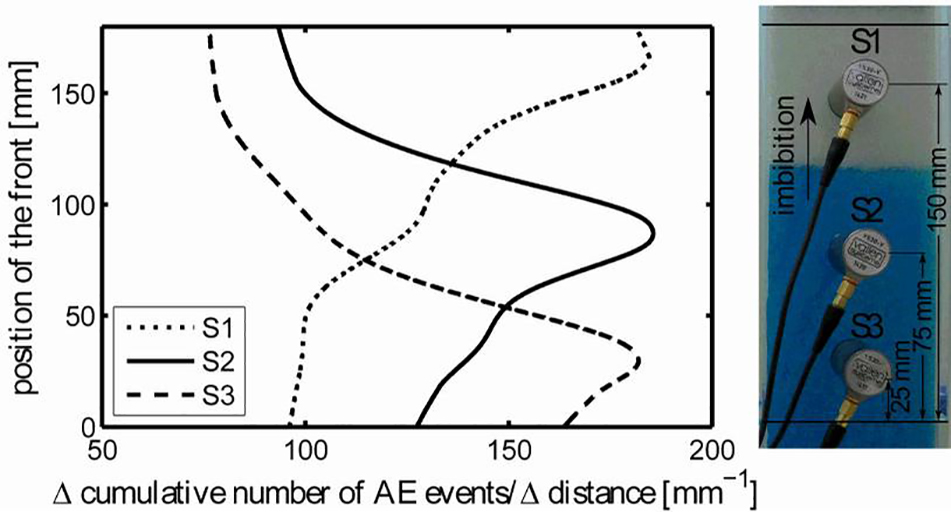
Figure 2: (left) Cumulative number of Acoustic Emission (AE) events versus imbibition front position for initially dry beads (diameter 0.50 mm) and flow rate of 5ml/min (~ 0.3 mm/s). (right) Experimental set-up with sensors to measure AE at Hele-Shaw cell with moving imbibition front.
b. FLOW TRANSITIONS
During drainage from porous media transitions in dominating flow processes occur; Close to the front saturated pores become invaded in a piston type of invasion at the moment air entry of a restricting throat is exceeded (Haines jumps), leaving behind liquid that is restricted to the corners of the pore space. The so formed network of corner films becomes increasingly well connected as more and more pores are air invaded, and its hydraulic properties are expected to dominate drainage dynamics and timescales at certain distance behind the front. We investigate how the transition to corner dominated drainage and the characteristics of the formed corner film network depend on drainage boundary conditions and pore space geometry and how they may result in temporal phase entrapment.
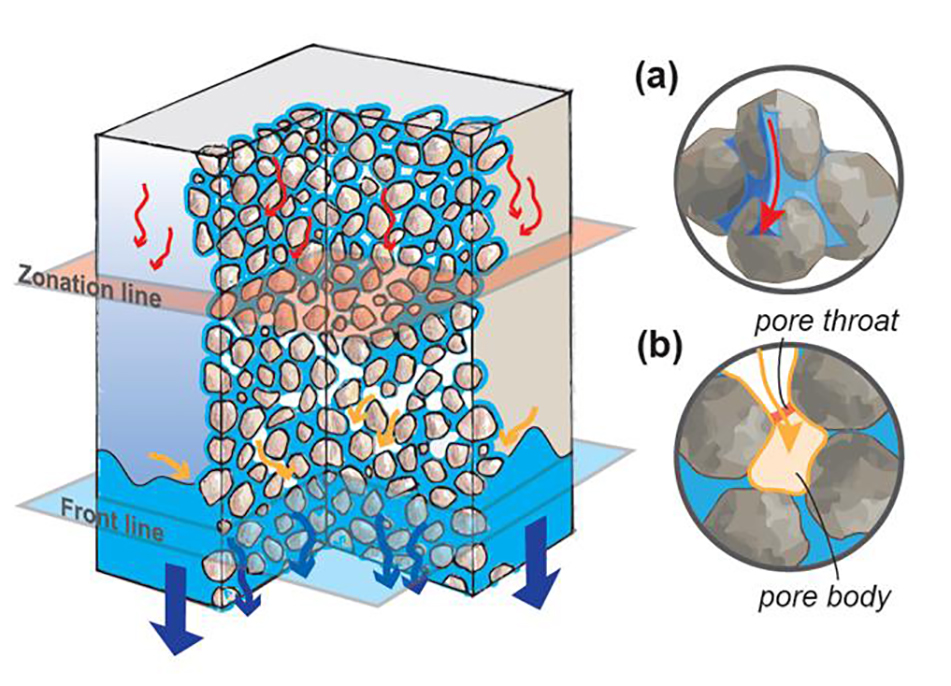
Figure 3: Conceptual image of flow transitions and pore scale drainage mechanisms behind a drainage front invading a porous medium. Initially saturated pores become rapidly air invaded as shown in (b), a dominating process around the front line, leaving behind water in corners and crevices of the pore space. The properties of the so formed corner film network dominate drainage dynamics (a) at some distance behind the front line, depending on drainage boundary conditions and pore space geometry.
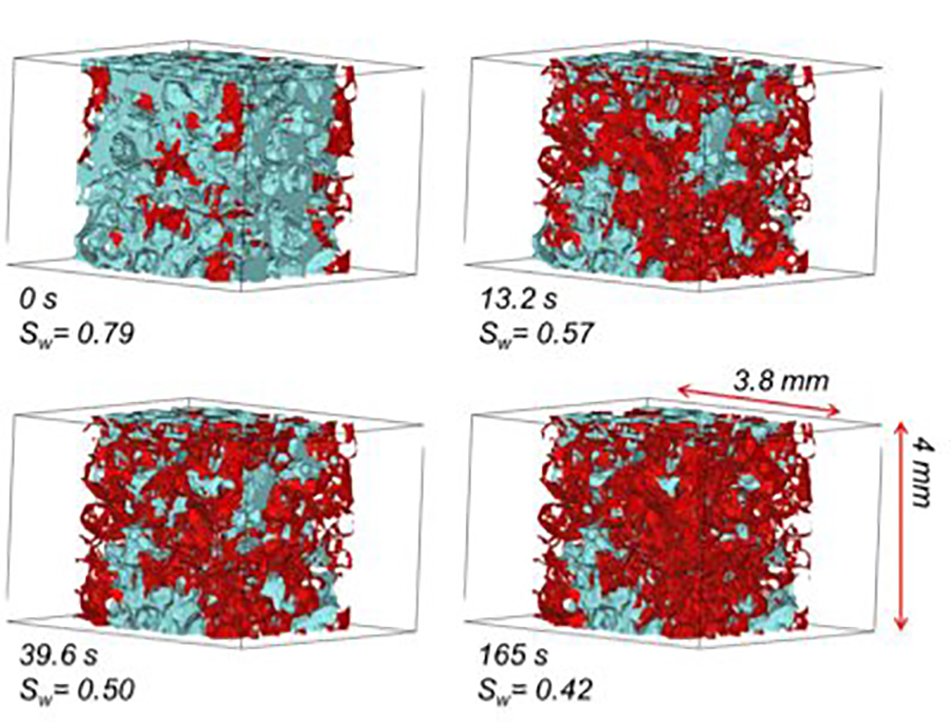
Figure 4: Temporal sequences of water configurations at total water saturation Sw during drainage from coarse sand (0.3-0.9 mm particle sizes) imaged by fast X-ray tomography (3D scan within 1s at the TOMCAT beamline of the Paul Scherrer Institute). Water is classified into two categories: 1) water occupying a completely saturated pore (blue) and 2) water held as corner films (red). With ongoing drainage and decreasing total water saturation the fraction of water in corner film structures is increasing and corner films become better connected. Their low hydraulic conductivity can limit drainage rates from the point that corner films completely surround clusters of full pores.
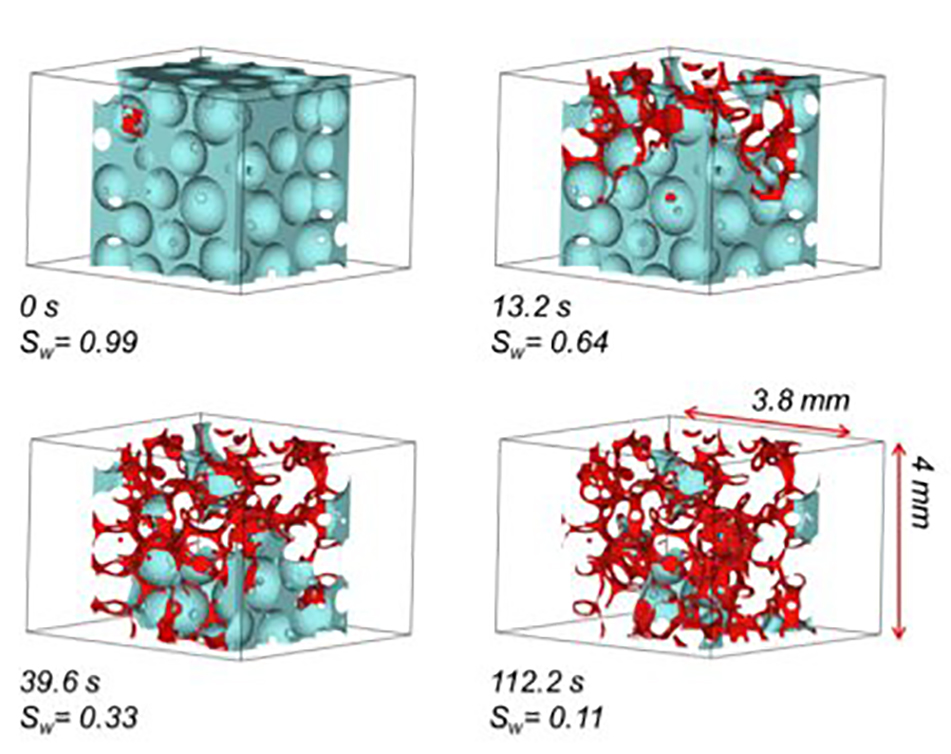
Figure 5: Temporal sequences of water configurations at total water saturation Sw during drainage from glass beads (0.5-0.75 mm particle sizes). For further explanations we refer to figure 4.
c. SOIL STRUCTURES Soils consist of various materials differing in hydraulic properties (pore- and particle sizes, wettability, porosity, ..) forming abrupt interfaces between its constituents. Due to hydraulic coupling between different materials, effective properties cannot be deduced from average properties of single materials.
d. INTERFACE BETWEEN SOIL AND ATMOSPHERE Water exchange between terrestrial systems and atmosphere in course of evaporation is not controlled by atmospheric conditions (temperature, humidity and air flow) or transport properties of porous media (conductivity, pore size distribution) alone, but as well by a viscous boundary layer determining vapor flux between the two compartments. (Evaporation from porous media)
Team: Dani Or, Peter Lehmann
Funding: DFG
Students: Franziska Moebius, Frouke Hoogland
Contact:
